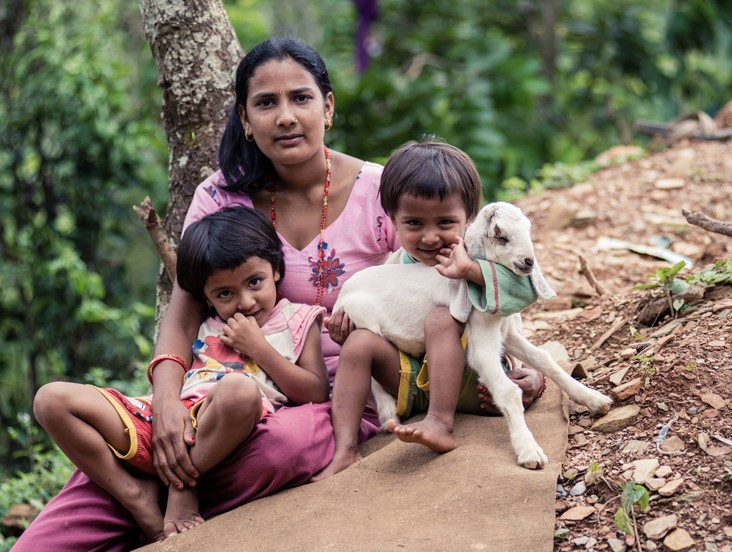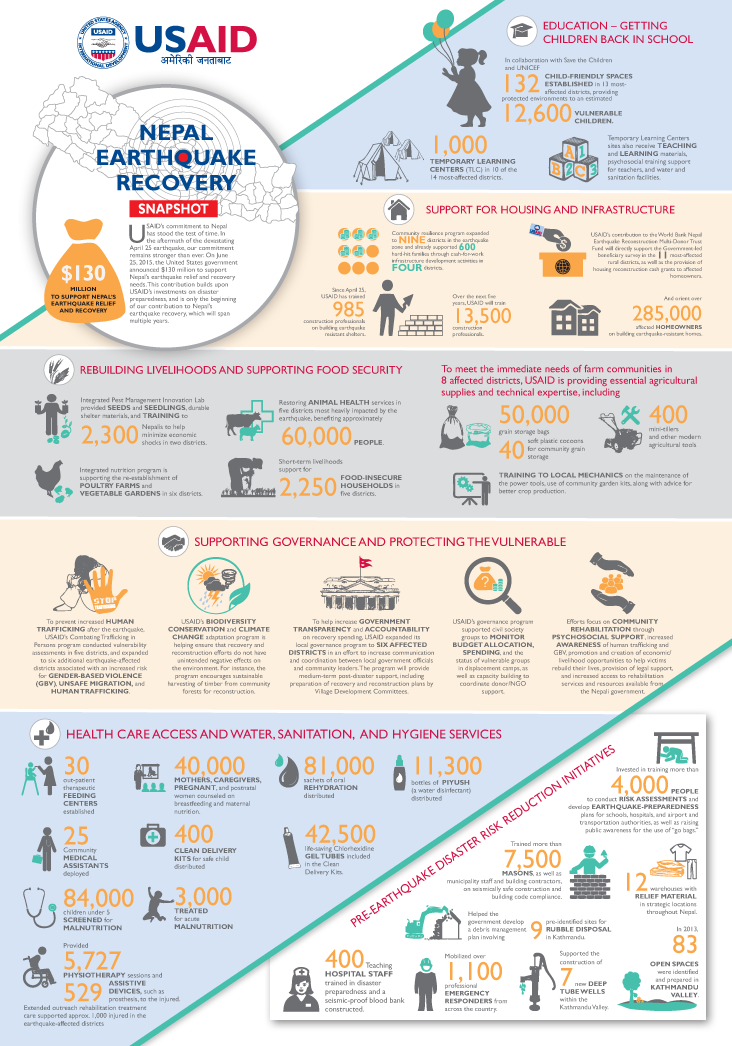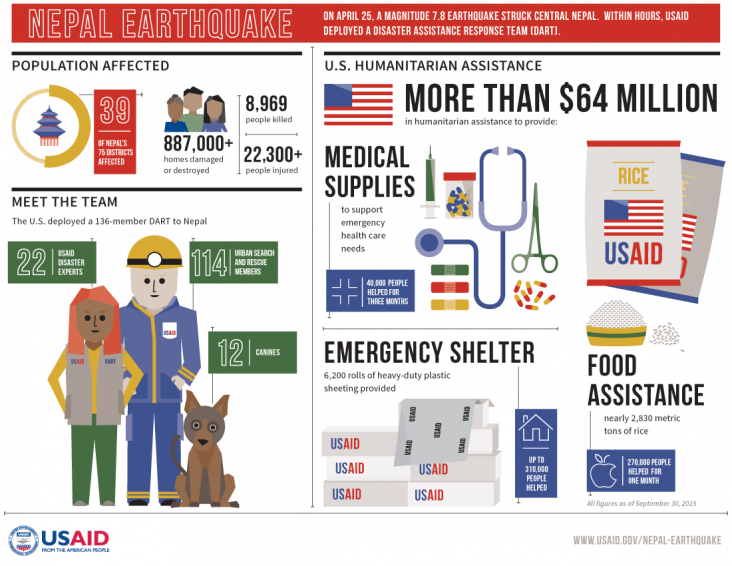Speeches Shim
2015 Nepal Earthquake Anniversary
Today marks the one-year anniversary of the spring 2015 earthquakes that struck central Nepal, affecting more than six million people in Nepal, India, China, and Bangladesh, and causing widespread damage and destruction. The United States again offers its condolences to the families of the estimated 9,000 people who lost their lives and the more than 25,000 others injured.
AFP / Prakash Mathema

In our response, the U.S. Government effort relied on more than two decades of investment in disaster risk reduction activities in Nepal, and since the earthquake we have provided approximately $130 million for relief and recovery.
Within hours of the earthquake, USAID deployed a Disaster Assistance Response Team (DART) to coordinate the U.S. government’s response efforts, conduct disaster assessments, and provide search and rescue capabilities. Our immediate humanitarian response included search and rescue deployments, emergency shelter, drinking water, food aid, and support to protect survivors against gender-based violence and human trafficking.
The DART’s urban search-and-rescue teams helped pull a 15-year-old boy out of the rubble five days after the first earthquake, and rescued a 41-year-old woman from a collapsed building following the major aftershock in May.
More than 1,100 USAID-trained first responders were able to quickly and efficiently provide post-earthquake support and pre-positioned supplies were available to help those in need, thus mitigating the damage and impact of the earthquake and its aftershocks. USAID’s hospital preparedness project also helped 11 major hospitals develop disaster preparedness plans. As a result, Nepal’s largest hospital remained open, treating 700 patients and performing 300 surgeries in the first 24 hours post-earthquake.
Since the earthquakes, the U.S. Government through USAID has continued its long-term recovery efforts in housing and infrastructure; livelihoods and food security; health, water and sanitation; good governance; and the prevention and protection of vulnerable populations against gender-based violence and trafficking in persons. Highlights of these efforts’ impacts include:
- Training more than 900 masons and engineers and orienting 800 households on safer building designs; funding the construction of 1,000 temporary learning centers to keep children in school; and supporting more than 33,000 households with grain storage, tools, and agricultural training to restart farm operations.
- Expanded its gold standard “Suaahara” maternal and child health nutrition project. USAID has screened 84,000 children under five and treated 3,000 people for malnutrition, and has counseled 40,000 mothers on best nutrition practices.
- Supported the establishment of over 1,000 temporary learning centers to serve more than 148,000 children and provide learning and school supplies to 195,000 children.
- Expanded the “Cereal Systems Initiative in South Asia” project which has provided over 33,000 households with grain storage, tools, and agricultural training to restart farms.
The United States stands alongside the people of Nepal, and we remain committed to Nepal’s efforts in housing and infrastructure, livelihoods and food security, health, water and sanitation, good governance, and the prevention and protection of vulnerable populations against gender-based violence and trafficking in persons.
To find more information about USAID’s development assistance to Nepal, visit USAID’s Nepal Country Page



Comment
Make a general inquiry or suggest an improvement.